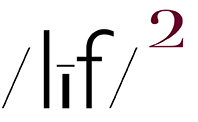all photos ~ (embiggenable)
THERE ARE DAYS WHEN I STRUGGLE TO COME up with photography related topics to write about. In large part. that’s cuz during the course of my blogging–decades–I have covered a lot of ground and I try not to repeat topics too frequently and I strive to stay on topic, i.e. the medium of photography and its apparatus.
That written, I do have an interesting life and I could easily write about my sleep habits or all of the fascinating details of the recent decisions I made when purchasing a new car or all about the 3 turbo-powered performance cars I have or there is my golf game and how I have recently re-shafted my forged irons with senior shafts or explaining why I have 4 canoes–2 solo and 2 tandem–and the subtleties of the J-stroke or how about my whiskey collection of rare and very expensive bottled spirits and addressing the question of whether or not my bottle of Pappy Van Winkle 20 Year Old is worth the price or my other hobby of building very complex LEGO sets or … et al …. but, I won’t do it. So instead, it’s on with the show….
Re: “creamy” bokeh: bokeh is the quality and feel of the background/foreground blur and reflected points of light in the out-of-focus, aka: blurry, parts of an image. Bokeh is judged to be “good” when the background blur is soft and “creamy”–smooth, round circles of light and no hard edges–making the blur pleasing to the eye. Bokeh is judged to be “bad” when the circles of light have sharp, aka: well-defined, edges and, dependent upon lens diaphragm blades–rounded blades, good / straight blades, bad–a hexagonal shape.
So, back in the olden days when photographers used those antiquated things called cameras, if one were to be desiring smooth, round out-of-focus circles of light / “creamy” blur, both the number and the shape of a lenses’ diaphragm blades was an all important element in creating that desired result. Making pictures with a fast prime lens, with rounded / blade apertures, set to the lowest value, aka: wide ”open” was the way to go for creating “good” bokeh.
On the other hand, today, in the modern world, one need not be concerned with all that “real” camera crap. Enlightened shooters can just fire up their cell phone’s picture making module / capabilities, set it to the PORTRAIT mode and choose the amount of blur you desire and fire away. And, get this, if you don’t like the result you can increase or decrease the blur–from none at all to max out-of-focus–after the fact during the image processing stage. And, in my experience, there is nary a hard-edge circle to be found and the blur is “creamy” enough to please my eye and sensibilities..
Of course, when employing this technique, you risk incurring the ire of the “real” camera purists who will tell you in no uncertain terms that your blur is “fake”–nothing more than an amateurish, cheap trick / effect cuz, ya know, “real” men use use “real” cameras.
My advice, just smile and move on knowing that “real” people, who enjoy looking at pictures, rarely give a crap about how a picture is made. They just know a good picture when they see it.
